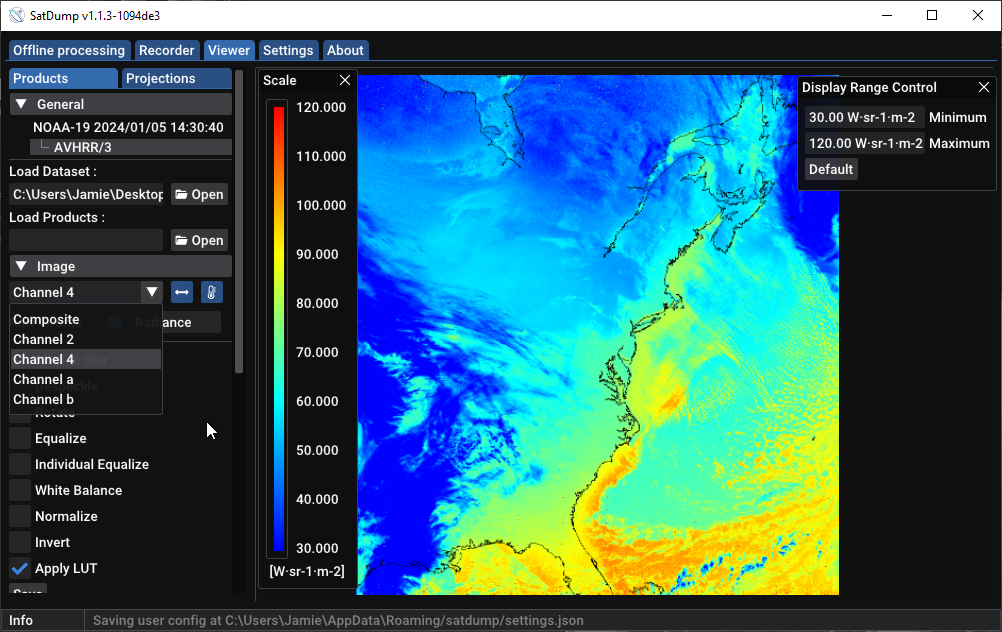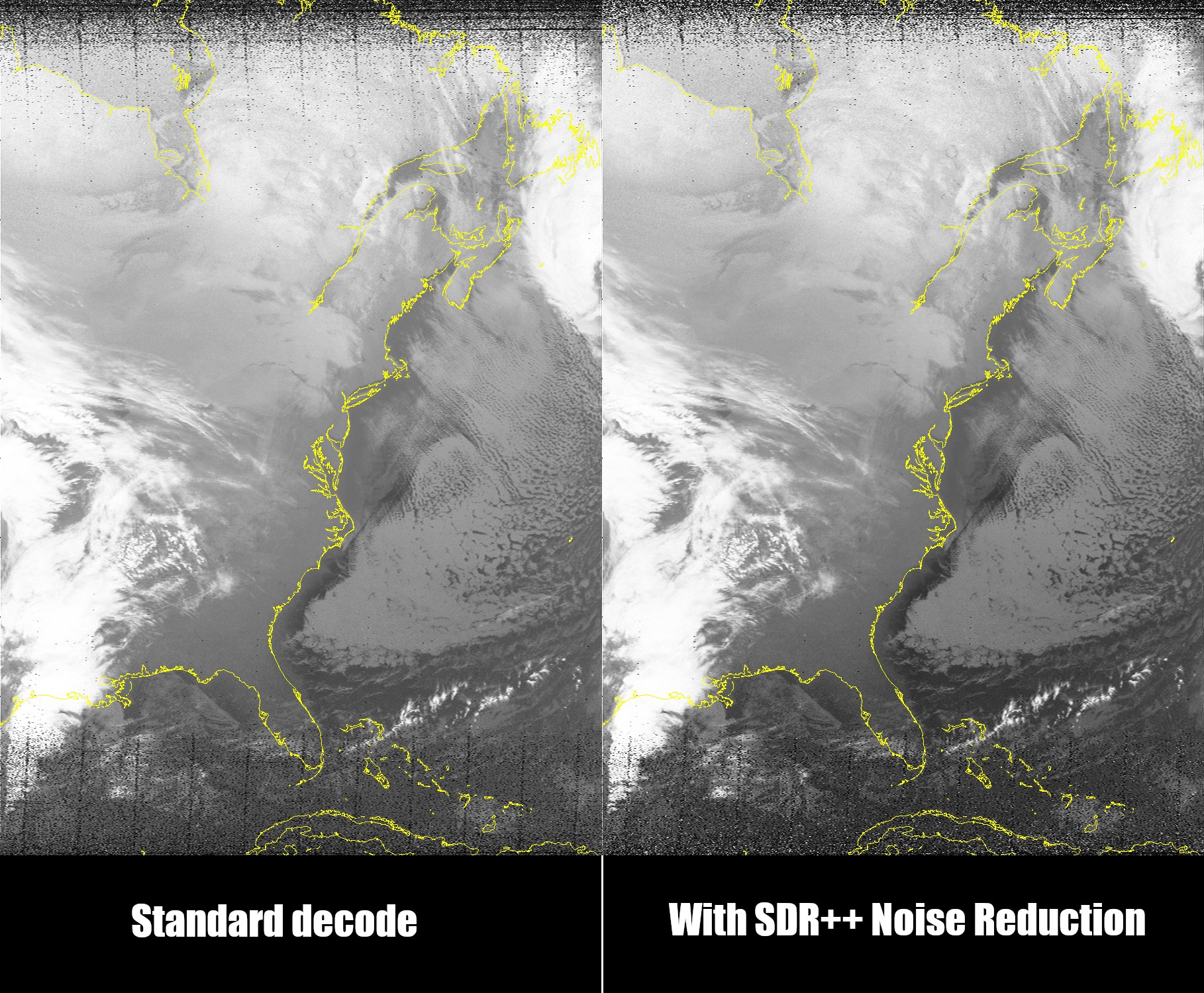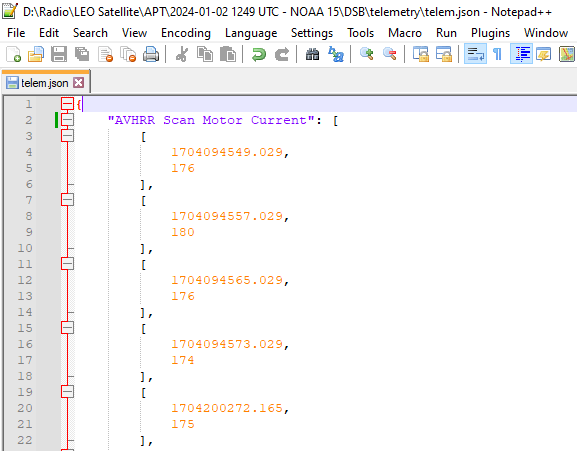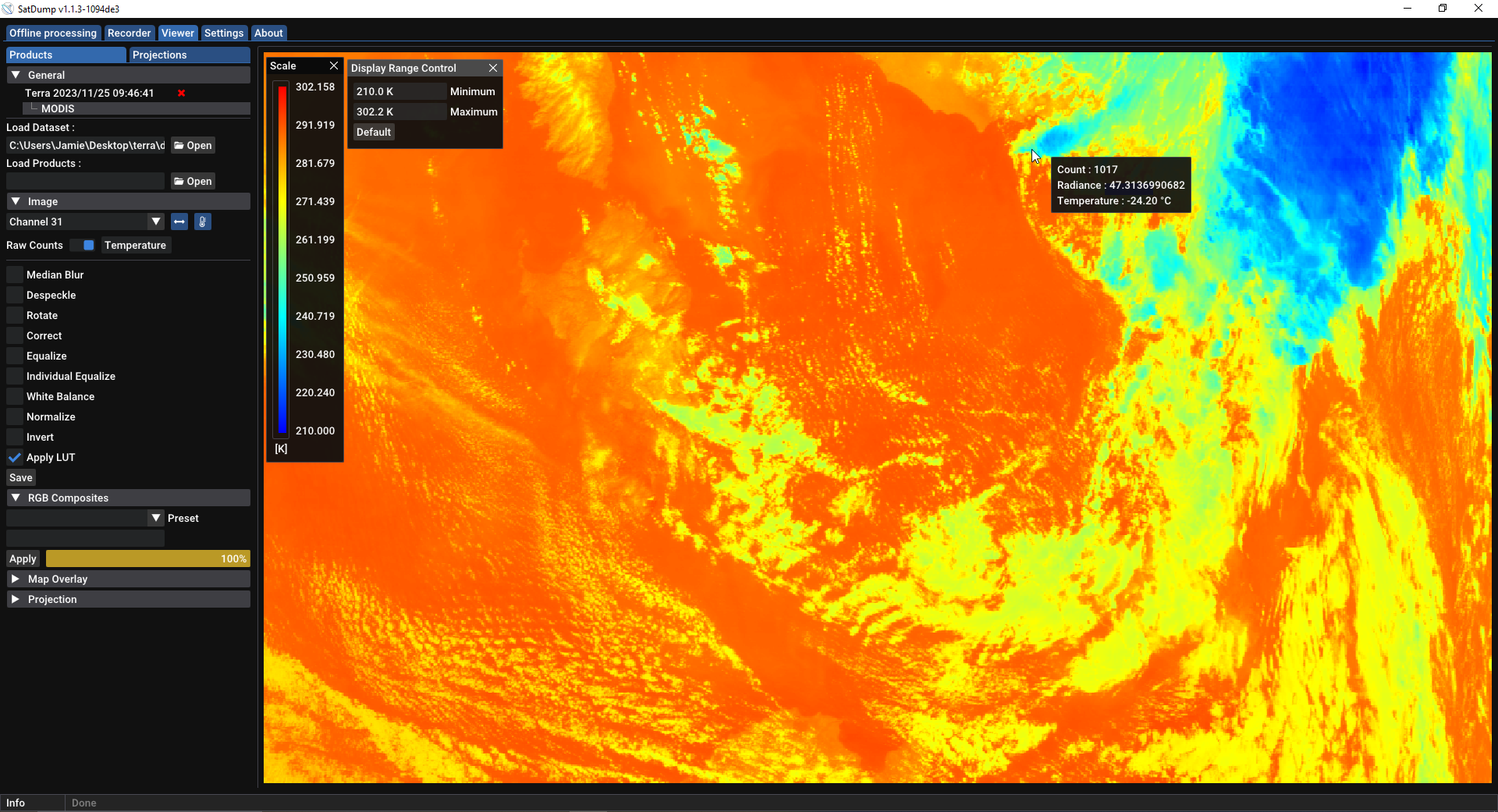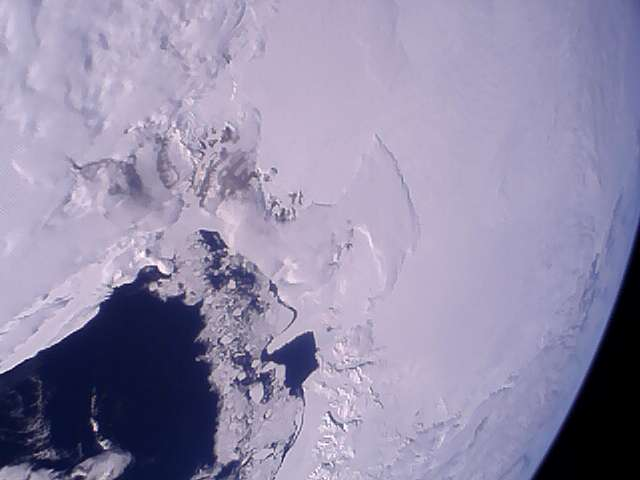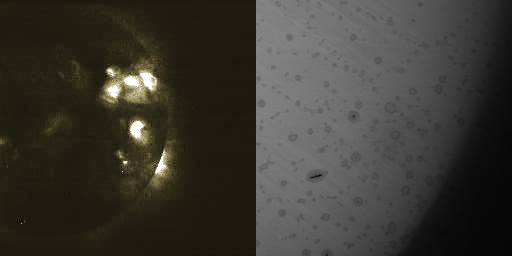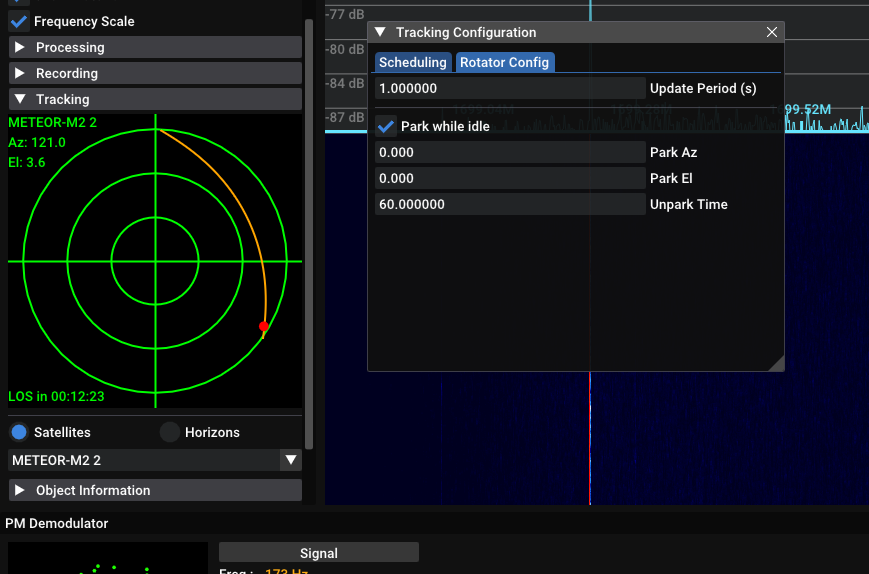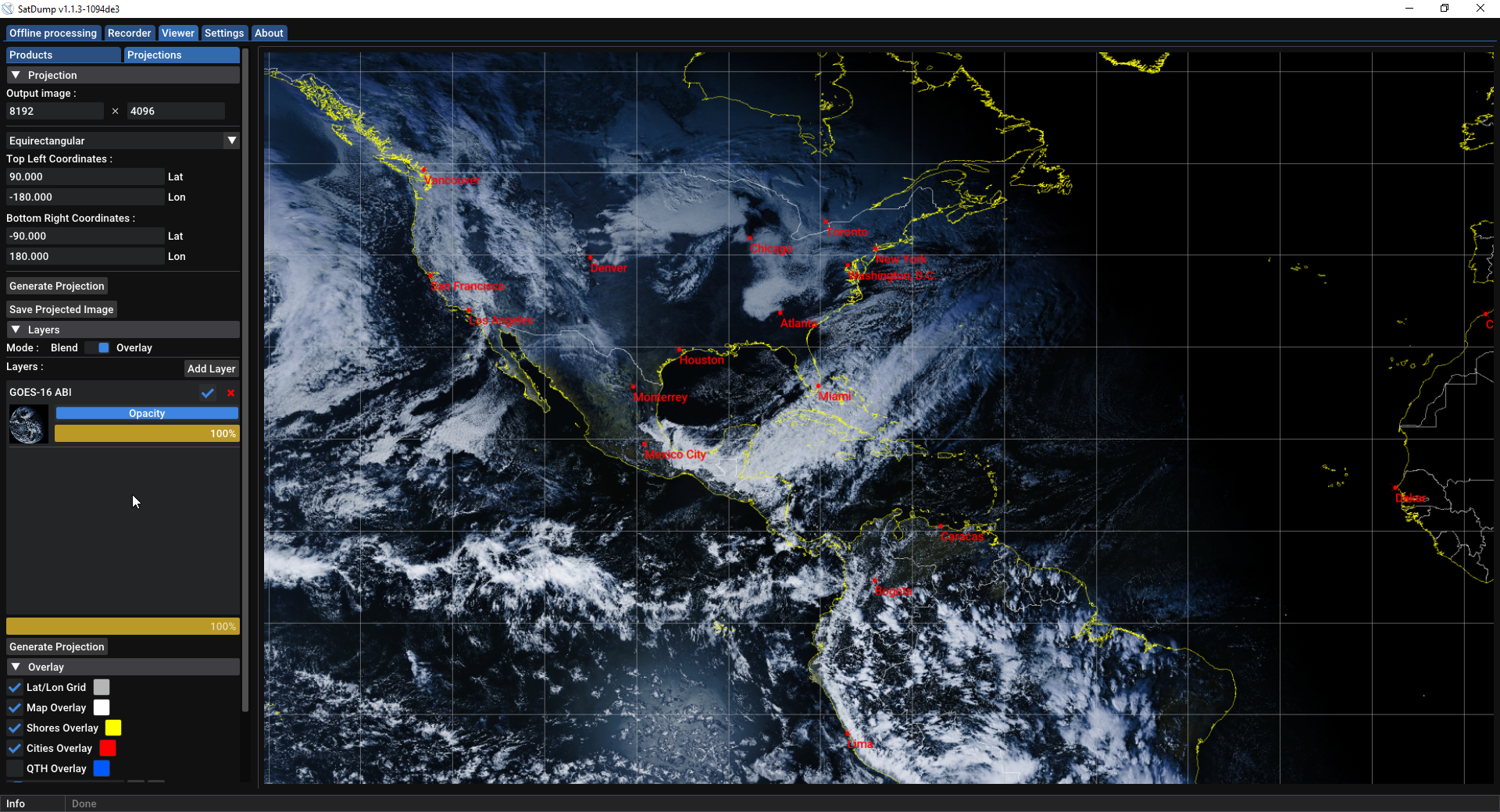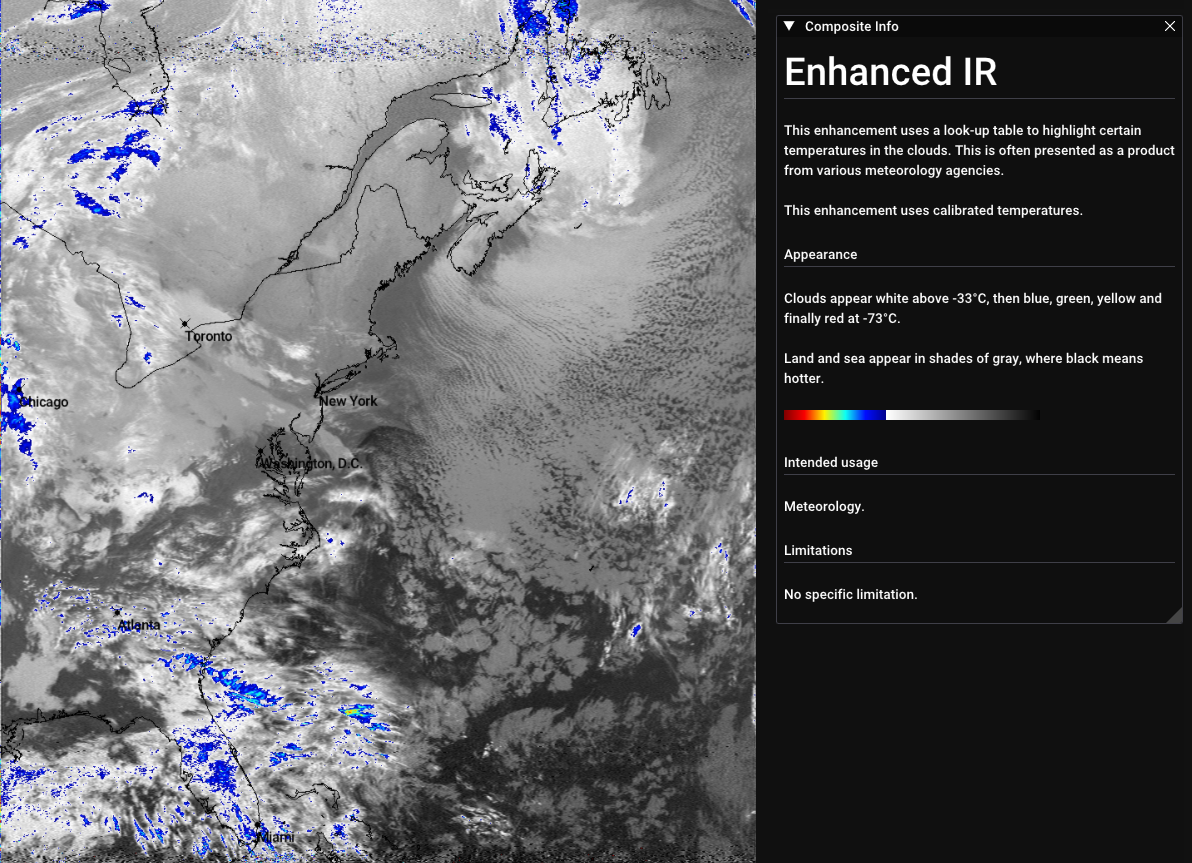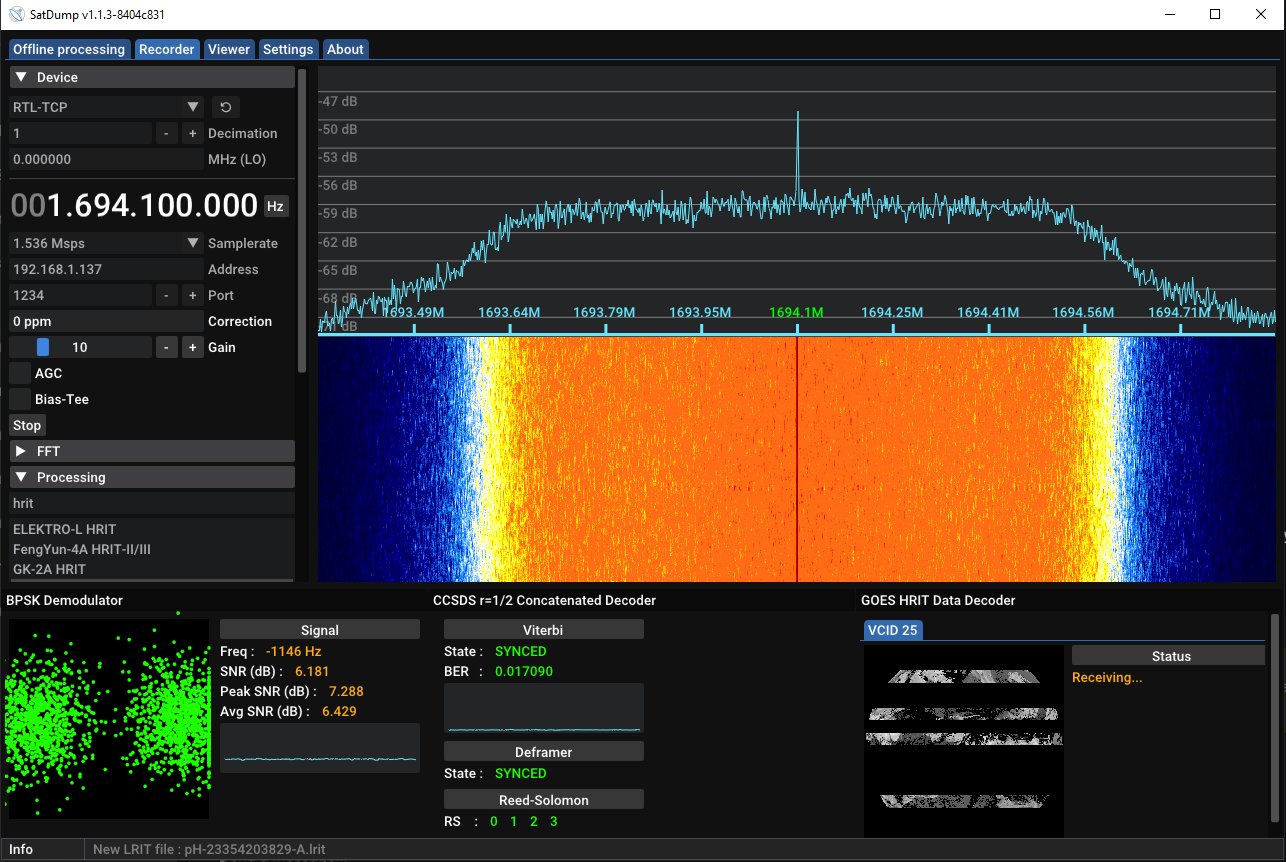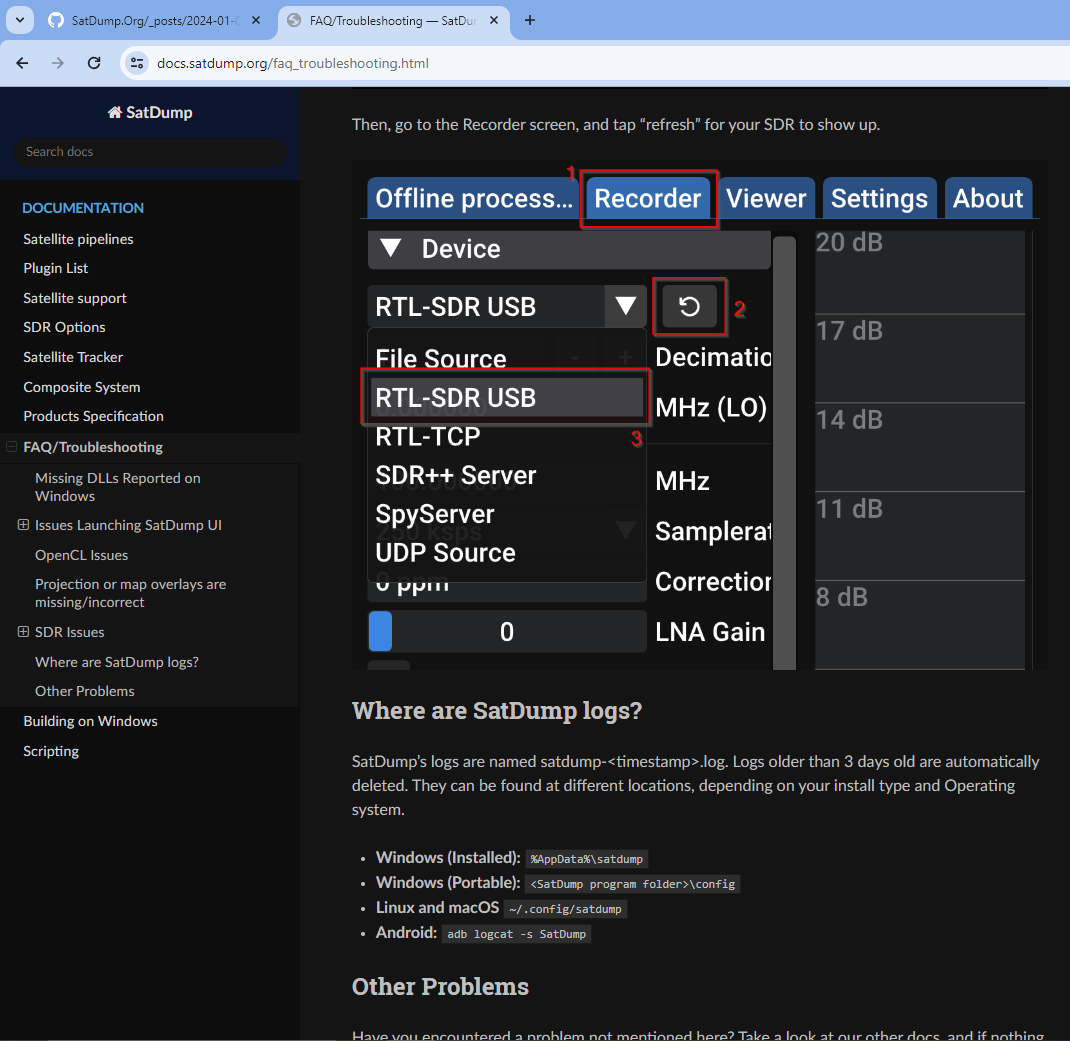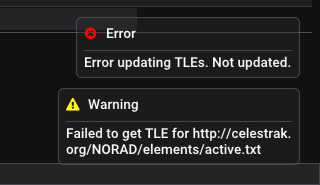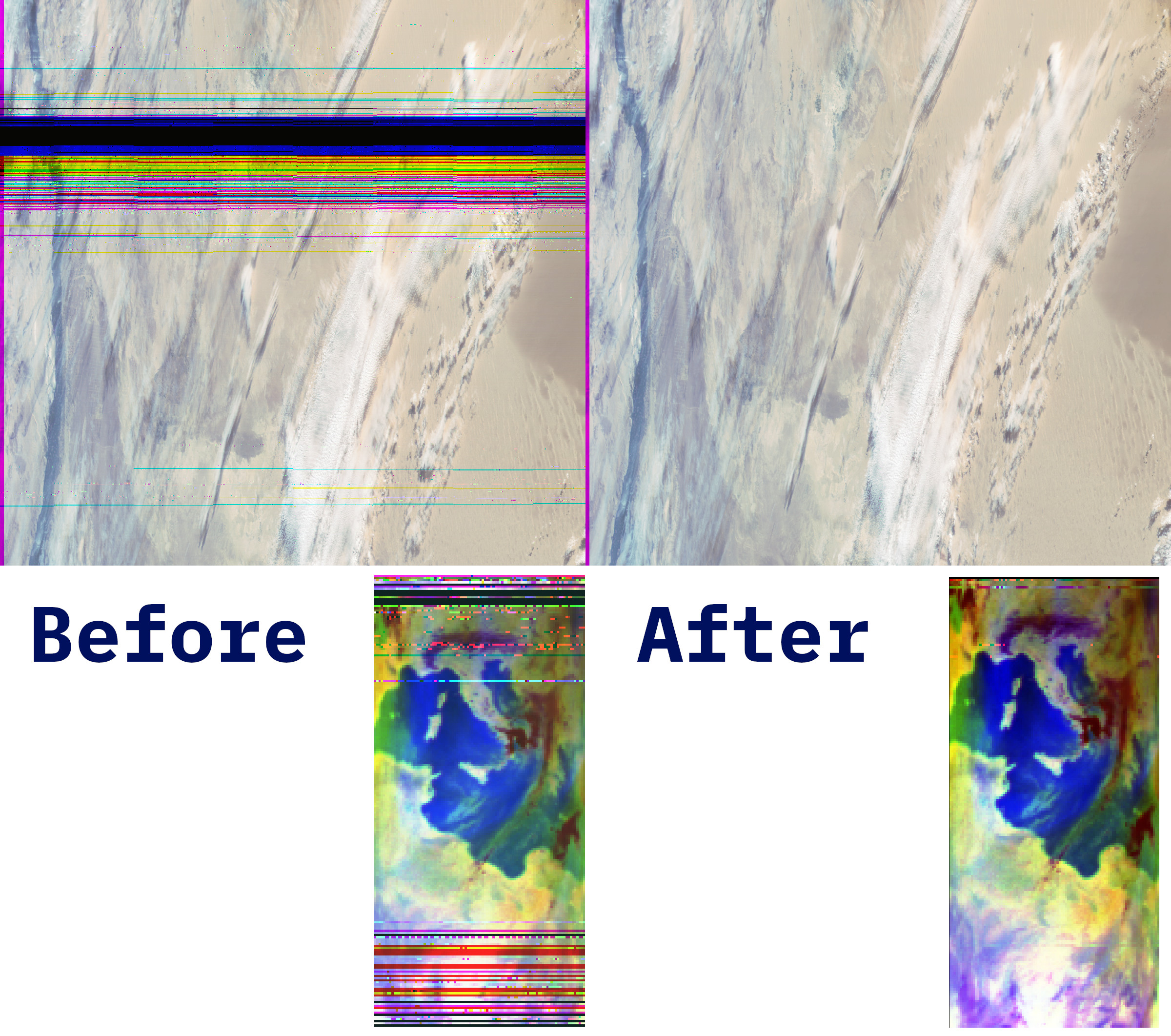New Year, New SatDump! We’re happy to announce a new version of SatDump with several added features and even more bug fixes.
New Features
NOAA APT improvements
This release brings a large number of changes to NOAA APT. One major change is that SatDump now identifies the channels you are receiving on APT. Instead of simply seeing Channel A/Channel B, each side of the transmission is identified as Channel 1, 2, 3b, 4, or 5.
Additionally, and more importantly: NOAA APT data is now calibrated 🥳! This means APT data should match its higher data rate cousins on HRPT, and can be used together with it in projections and data analysis. This has enabled us to add a Thermal composite, similar to what you may find in other software.
Finally, the APT Noise Reduction by Ryzerth from SDR++ has been added to SatDump! The noise removal does a great job of reducing “speckling” in APT images when the signal is a bit weak, without resorting to a more destructive Kuwahara filter or median blur.
Added TIP telemetry decoder
Thanks to thomasdouwes, NOAA TIP telemetry can now be decoded from NOAA 15, 18, and 19’s HRPT, DSB, and GAC downlinks. The telemetry includes a lot of internal operational data about the satellite, including one relevant piece: the AVHRR Scan Motor Current. The ability to access this information is useful in tracking the health of the motor, which has caused issues in the past with NOAA 15. Thanks Thomas!
Added MODIS calibration
New to the calibrated data club, we welcome MODIS! Included on Aqua and Terra, the emissive channels have been calibrated for use in data analysis. Reflective channels have not yet been calibrated, but calibration is planned for all MODIS channels.
Added AMSAT-F Spino, Stratosat TK-1, and Geoscan-Eldeveis support
Initial, still to be considered experimental support for decoding a few Cubesats has been added. This is in addition to Lucky-7 support, which was added in 1.1.0.
Added Hinode/Solar-B support
Thanks to some lucky findings by OK9UWU and his data, Aang23 was able to decode the XRT/EIS instruments on the Hinode / Solar-B satellite. Right now, all data is transmitted on S-Band due to a failure of the X-Band transmitter, and it dumps to ground stations all over the world.
Auto-tracking improvements
A new work-in-progress feature has been added to the SatDump CLI: autotrack. CLI autotrack makes it easy to build an automated satellite station that can run on a Raspberry Pi or similar device. All you need to do is write a config file and start the program, and all scheduled satellite passes will be automatically recorded or decoded. To make monitoring easier, CLI autotrack provides a webpage on http://your-ip:8081/ that shows its current status. For a full write-up, check out this article on lego11’s website.
Another new feature of auto-tracking is “rotator parking,” which returns your dish to a parked location until a pre-defined amount of time before the next scheduled pass.
Finally, if you used the Autotrack in the SatDump UI before this update: you will need to re-save the configured frequencies after updating. Once you set the frequencies again, autotracking should continue to work as normal.
Added composites
As has become a trend, Lego11 and Marhmarchi have added a number of new composites in this version, including:
- Color convection longwave IR: This enhancement uses a look-up table to better make convective phenomena stand out, such as cumulonimbus clouds.
- Enhanced IR: This enhancement uses a look-up table to highlight certain temperatures in the clouds. This is often presented as a product from various meteorology agencies.
- NDWI: a simple enhancement used to monitor changes in water content of leaves using the difference of the two channels used by this enhancement (1.61 and 0.863 µm).
- Thunderstorm Detection: This enhancement uses the 157 and 183 GHz channels to detect towering cumulonimbus clouds and significant thunderstorm nuclei.
- Nighttime Fire Detection: A work in progress, this composite uses AVHRR data to detect fires using an adaptation of the NOCTURNAL THRESHOLD MODEL by S. Boles and D. L. Verbyla.
- MCIR For METEOR: MCIR, the beloved cloud-overlay composite, has been added for METEOR MSU-MR
- MTVZA Vegetation: This enhancement uses METEOR-M2-x’s MTVZA channels 16, 15 and 17 (53.3 GHz, 52.8 GHz and 53.8 GHz) to detect vegetation and snow.
- ATMS Brightness Temperature: This is a composite based on the JPSS-1 ATMS Level 1B Brightness Temperature V2. Calibrated temperature values from channel 2 (31.4 GHz) are used.
- CIR (Color Infrared): CIR is perhaps the most widely used enhancement for earth observation, and is used with MODIS. It has its roots from aerial orthophotography, as it shows contours as well as vegetation better and also avoids using the blue band which is affected by scattering.
- MODIS composites: Geology, Agriculture, Bathymetric, and AVHRR-style 543b, and other traditional NOAA enhancements have been added for MODIS
Along with these additions, a number of LUTs have been replaced/updated for accuracy, and composites have been tweaked for better results. A lot of work went into this, this time around!
Improved Viewer Rendering
Old versions of the SatDump viewer had issues with some image features, such as map overlay lines, “disappearing” as you zoomed out or panned around the image. This has been resolved in the new version, making for a much smoother experience when viewing satellite Data in SatDump.
Additionally, optimizations have been added to show map overlays faster after the initial render.
Added composite descriptions
While we’re talking about the viewer, we have also added descriptions for many of the RGB composites we provide in the viewer. The descriptions talk about how the composite is made, what to look for in it, and its use. It may also give you some great fun facts to tell at parties. If you do: trust us, you’ll be the life of that party.
Improved Frequency Selection
You asked, and we listened: SatDump now has a better quality frequency selection! Modeled after SDR# and SDR++’s frequency input, SatDump’s implementation lets you scan the spectrum with ease. You can now change the frequency in the recorder and autotrack scheduler in the following ways:
- Click on the top/bottom of a frequency digit to make it go up/down
- Use the mouse wheel/trackpad scrolling on a frequency digit to change it
- Arrow keys to change digits/navigate between them
- Point to the frequency, and start typing
- Right-click on a frequency digit, or press enter, to reset it and all digits to the right to 0
- Click on the Hz button, or tab into the frequency field, to access the legacy text input
New Documentation Website
As a sidenote, we have started migrating all documentation to https://docs.satdump.org/. Here you can find a FAQ/troubleshooting page, SDR support lists, pipeline parameters, and more. It’s still a work in progress, so there’s more to come there!
Other Features
- Improved detection of samplerate, frequency, and timestamp for offline decoding based on the input file name.
- Stopping a SDR with a switchable Bias-T now turns off the Bias-T power.
- Implemented manual baseband filter selection for HackRF SDRs.
- Added support for RTL-SDR Blog v4 on Windows and macOS; Linux users need to make sure their installed version of librtlsdr is v4 compatible.
- Improved RTL-SDR sample processing to reduce the DC spike without the need for DC block.
- Added an experimental SoapySDR plugin. It is not recommended at this time, but if you want to try it, you need to build SatDump yourself with the
-DPLUGIN_SOAPY_SDR_SUPPORT=ONin cmake. - Added new “viridis” colormap to the recorder waterfall (thanks 777arc!)
- Added option to mute audio in pipelines that support it, such as NOAA APT.
- Added option to remember UI size/position on screen.
- The QTH map label can now be customized
- Changed FFT “Average Rate” to a more user-friendly “Average Number”
- Calibration coefficients have been added for NOAA 15 AVHRR.
- Various UI changes: decoding pipelines are now sorted alphabetically, viewer composite presets are now searchable, and more!
Bugs fixes
In addition to these new features, the following bugs have been fixed in 1.1.3.
TLE Fix
About a week ago, CelesTrak removed legacy URLs to access static TLE files. SatDump was relying on one of them (active.txt) as its primary TLE source. In this release we have internally updated the URL; if you have the error shown below in an older version of SatDump, please update to resolve it. TLEs update daily by default in the latest version of SatDump, as this is the recommended setting.
The last minute fix
While I was writing this changelog, one more major fix was slipped in: there was serious a bug in a function used as part of the decoding of many satellites which would result in more or less significant hit to decoding at lower SNR in some situations. The most affected missions were FengYun-3, and many others in much less noticeable fashion such as MetOp, JPSS, etc.
Other smaller fixes
- Fixed several bugs with Horizons data in the tracker
- Fixed bug where floating windows could go behind the main UI
- There were a number of bugs present when running SatDump on a 32-bit platforms, including 32-Bit Raspberry Pi OS. These have been fixed.
- Fixed bug in MetOp AVHRR calibration
- Some error messages would linger in the UI for longer than they should. Error/confirmation messages now clear themselves after 5 seconds.
- Fixed a bug where the viewer would fail to load large images on older graphics cards
- The “correct” option was available in the viewer for NOAA APT, which does not make sense since APT is already corrected onboard. This option has been removed.
- Fixed opening web links on Android
- Fixed “normalize” function in the viewer
- Fixed many stability and reliability bugs in SatDump SDR Server. Special thanks to F6BVP for his help in tracking these down!
- Fixed many bugs in edge cases, such as attempting to decode data at 0 SPS
- Some more bugs were fixed that are not worth mentioning… there were so many bug fixes
Git log scorecard
- Total number of times we publicly said “Oops”: 16
- Total number of times we forgot to save a file: 6
- Total number of Windows-specific bugs fixed: 5
As always, if you come across any bugs, feel free to open an issue on GitHub or reach out to us on Matrix!
